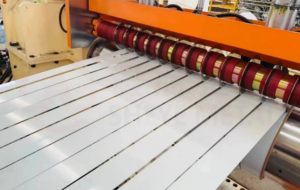In the realm of materials science, the quest for metals that can withstand extreme temperatures is ongoing and critical. High-temperature applications are diverse, ranging from aerospace to nuclear energy, and the selection of the appropriate metal is paramount for ensuring safety, durability, and performance. In this article, we will delve into what metal is used for high temperature.

What metal is used for high temperature?
One of the most notable metals for high-temperature applications is tungsten. Tungsten, with its high melting point of 3420°C, is renowned for its exceptional thermal stability and resistance to oxidation. Its unique properties make it a prime candidate for use in high-temperature environments, such as electrodes in arc welding and plasma cutting, as well as in refractory materials for furnaces and other industrial processes. Tungsten’s high density and hardness also contribute to its use in radiation shielding and high-speed cutting tools.
Molybdenum, another refractory metal, is also a favorite choice for high-temperature applications. With a melting point of 2620°C, molybdenum exhibits excellent thermal conductivity and corrosion resistance. Its strength and stability at high temperatures make it suitable for use in furnace components, crucibles, and other high-temperature equipment. Molybdenum alloys are also used in aerospace and nuclear industries due to their ability to retain mechanical properties under extreme conditions.
Titanium and its alloys are another class of metals that excel in high-temperature environments. Titanium has a high melting point and exceptional corrosion resistance, making it suitable for use in aircraft engines, spacecraft, and other high-performance applications. Titanium alloys, particularly those containing aluminum and vanadium, exhibit even better high-temperature strength and creep resistance, further enhancing their utility in demanding conditions.
Nickel-based alloys are another key group of materials that demonstrate remarkable performance at high temperatures. These alloys, often containing chromium, cobalt, and other elements, possess exceptional oxidation resistance and mechanical strength. They are widely used in gas turbines, jet engines, and nuclear reactors, where they are required to maintain structural integrity and performance under extreme heat. The addition of rare earth elements such as ytterbium and hafnium further enhances the high-temperature properties of these alloys.
Iron-based alloys, particularly stainless steels and superalloys, also play a crucial role in high-temperature applications. Stainless steels, with their chromium content, are resistant to oxidation and corrosion, making them suitable for use in high-temperature equipment and structures. Superalloys, on the other hand, are composed of nickel, cobalt, and various strengthening elements, which give them exceptional high-temperature strength and creep resistance. These alloys are often found in turbine blades, exhaust systems, and other critical components that require sustained performance at elevated temperatures.
In addition to the metals mentioned above, refractory ceramics and composites are also worthy of consideration for high-temperature applications. These materials, such as silicon carbide and alumina, possess even higher melting points and excellent thermal stability. They are often used in extreme environments where metals cannot meet the requirements, such as in rocket nozzles and re-entry shields.
The selection of metals for high-temperature applications is a complex process that involves careful consideration of various factors. These include the melting point, thermal conductivity, oxidation resistance, mechanical strength, and creep resistance of the material. Additionally, the cost, availability, and processing techniques also play a role in determining the most suitable metal for a given application.
Moreover, it is crucial to understand that metals do not perform identically under all high-temperature conditions. The performance of a metal can be affected by the presence of impurities, the microstructure of the material, and the environmental conditions it is exposed to. Therefore, it is essential to conduct thorough testing and evaluation to ensure that the selected metal can meet the specific requirements of the application.
Conclusion
In conclusion, the choice of metal for high-temperature applications is highly specialized and depends on the specific demands of the application. Tungsten, molybdenum, titanium, nickel-based alloys, iron-based alloys, and refractory ceramics are just a few examples of the diverse range of materials available for such demanding uses. As a metallurgical expert, I emphasize the importance of conducting thorough research and testing to identify the most suitable metal for each unique high-temperature application.
Thank you for reading our article and we hope it can help you have a better understanding of what metal is used for high temperature. If you are looking for high-temperature alloy suppliers and manufacturers online now, we would advise you to visit Huaxiao Alloy.
As a leading supplier of high-temperature alloys from Shanghai China, Huaxiao Alloy offers our customers high-quality GH2132, GH3030, GH3039, GH3128, GH4145, and GH4169 at a very competitive price.



